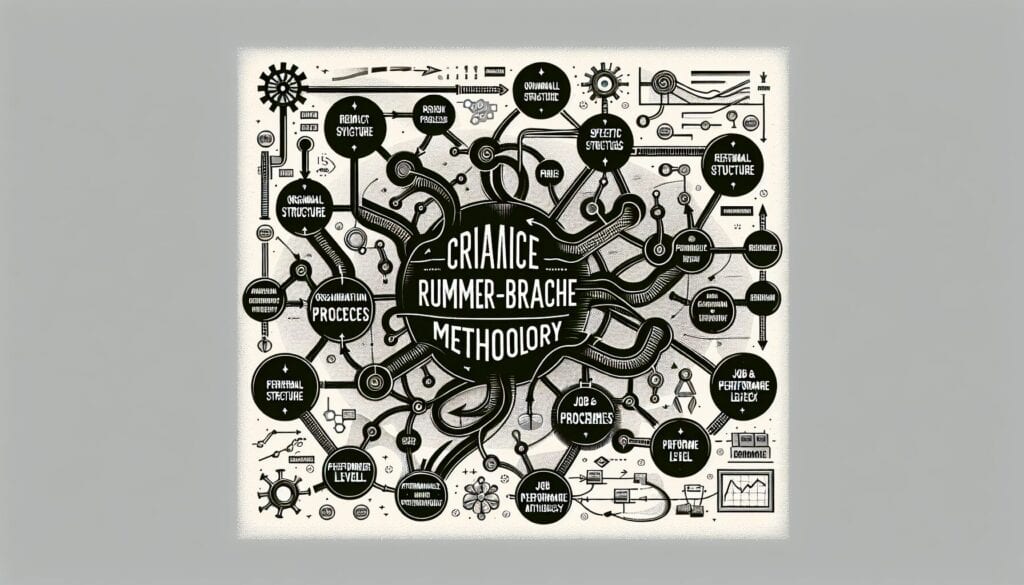一种绩效改进方法,侧重于将组织视为一个适应性系统,并从组织、流程和工作/执行者三个层面进行绩效管理。
- 方法: 人体工程学
鲁姆勒-布拉赫方法

鲁姆勒-布拉赫方法
- 敏捷方法论, 业务流程重组(BPR), 变更管理, 持续改进, 精益制造, 组织转型, 性能跟踪, 流程制图, 质量管理
目标
如何使用
- 强调了解职能筒仓之间的 "空白区域",因为这些区域往往是流程崩溃的地方。使用流程映射和人力绩效系统分析等工具来诊断和改进绩效。
优点
- 为绩效改进提供一个综合框架;将战略、流程和个人绩效联系起来;帮助识别和解决系统性问题。
缺点
- 全面实施可能很复杂;需要在整个组织内采用系统思维方法;可能需要大量培训和文化变革。
类别
- 人力资源, 项目管理, 质量
最适合:
- 通过对整个组织的目标、流程和个人工作绩效进行系统分析和调整,提高组织绩效。
The Rummler-Brache Methodology is particularly effective in industries such as healthcare, manufacturing, finance, and technology, where process efficiency is pivotal for organizational success. During the planning and execution phases of projects, this methodology can be initiated by executives or operations managers looking to enhance alignment between strategic objectives and day-to-day operations. Participants generally include cross-functional teams composed of stakeholders from different areas of the organization, as it promotes collaboration and communication among various departments. Tools used in this methodology, such as process mapping, allow for visual representation of workflows, making it easier to identify bottlenecks and areas for improvement. Human Performance System analysis further aids in diagnosing problems by examining how individual behaviors impact overall performance. This systematic approach not only targets existing issues but also ensures that future initiatives are aligned with the organization’s long-term goals. The framework supports continuous improvement efforts, fostering a culture where feedback is integrated into performance reviews and project evaluations, thus encouraging adaptive strategies that can be implemented in real-time. As such, organizations employing this methodology often report enhanced employee engagement and accountability, as individuals understand how their performance directly influences organizational success.
该方法的关键步骤
- Identify the organizational goals and objectives.
- Map current processes across functional silos.
- Analyze the "white space" between processes for performance breakdowns.
- Assess individual job performance related to processes.
- Identify systemic issues affecting organizational performance.
- Develop interventions targeting the identified issues.
- Implement process improvements and training initiatives.
- Monitor performance changes and adjust as necessary.
专业提示
- Conduct regular cross-functional reviews to surface hidden inefficiencies and align goals across silos.
- Utilize data analytics to identify performance gaps and quantify the impact of process changes on outcomes.
- Develop a culture of continuous feedback and open communication to mitigate resistance to change and enhance collaboration.
历史背景
1962
1970
1972
1980
1980
1986
1986
1960
1963
1970
1980
1980
1980
1986
1987
(如果日期不详或不相关,例如 "流体力学",则对其显著出现的时间作了四舍五入的估计)。















相关文章
制造运营管理(MOM)
制造执行系统(MES)
生产控制计划
人工测试
手动搬运评估表 (MAC)
手动任务风险评估工具(ManTRA)